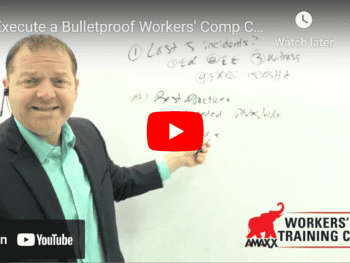
Role of Stakeholders to Identify Settlement Barriers
All interested stakeholders have a role in identifying and removing disincentives that may be in place. All parties must dare to review their programs openly and honestly to make a better change.
- Supervisors and Managers: This party is on the front line of removing programs that hinder return to work. They are best positioned to understand workplace dynamics and morale. Suggestions made by supervisors and managers should openly be received by upper management.
Click Link to Access Free PDF Download
“13 Research Studies to Prove Value of Return-to-Work Program & Gain Stakeholder Buy-In”
- Upper Management: Members in this call of stakeholders should be given data regarding the actual “cost” of every workers’ compensation claim and be willing to make a change. Receiving feedback and comments from supervisors and managers is needed.
- Claim Management Team: Claim handlers and managers should be willing to add value to the claims process by understanding their insureds’ business and having the courage to make recommendations.
Now is the time for all interested stakeholders to be proactive in reviewing workers’ compensation program costs.
Common Perverse Disincentives that Hinder Return to Work
Many programs are in place at any given time that serves as obstacles to return to work—identifying these barriers and making changes required.
- Wage and Salary Continuation Programs:
Employees who sustain compensable work injuries are entitled to wage loss benefits such as Temporary Total Disability (TTD) and Temporary Partial Disability (TPD) benefits. These benefits are paid based on the employee’s Average Weekly Wage (AWW) at the time of injury, but not at 100%. Typically, a benefit such as TTD is paid at 66.6% of the AWW. TPD benefits are typically paid at 66.6%, the difference between the AWW and the post-injury wage.
Sometimes, employers will step in and pay an employee their full wage or subsidize the “lost wages.” While this practice is generally not prohibited and can boost workplace morale, it creates a disincentive for the employee to return to work – even if that time off is for a short period. The bottom line is employers should never be involved in allowing employees to “double dip” on benefits.
- Employer-Sponsored Perks:
Employers will sometimes provide additional benefits to employees regardless of their status. This can include paying memberships to industry organizations, use of a company car, or accruing vacation and sick time benefits. While these programs are implemented to promote employment and incentivize people to work for them, they can also negatively impact them. Employers should review how their workforce is compensated with perks. Suggestions can be discontinuing these benefits while an employee is off following an injury or cap on benefits received.
Reviewing union collective bargaining agreements when deciding on these additional benefits is vital.
- Use of Collateral Source Benefits:
FREE DOWNLOAD: “13 Research Studies to Prove Value of Return-to-Work Program & Gain Stakeholder Buy-In”
Many different benefits discourage an injured employee from returning to work. Some of these “benefits” include holding open a job until the employee can return, pension and retirement plans, and concurrent employment options that eliminate the payment of wage loss benefits.
Employers should be commended for valuing their employees and making accommodations that keep employees following an injury. Countless studies demonstrate these types of assistance reduce workplace productivity and extend an employee’s time off work. Workers’ Compensation programs become inefficient when these factors are not considered.
- Encouraging Disability by Not Addressing Return to Work:
An emphasis must be placed on returning to work immediately after an injury occurs in the workplace. Not attempting to get the employee back to work leads to reduced motivation to work, deconditioning, and extra money spent on a claim. According to the Hierarchy of Motivation at Work, an injured employee’s motivation to return someone reduces the longer they are off following an indecent. Research into this area confirms that employees’ odds of returning to work decrease by 50% after 12 weeks off.
Conclusions
Many perverse disincentives reduce workplace productivity and extend the life of a workers’ compensation claim. Reducing program costs and promoting a better claim process requires all interested stakeholders to review their areas of control and help effectuate change. These changes can focus on common areas of barriers that are common in many programs. When making change consider its impact on workplace morale and union collective bargaining agreements. Now is the time to get started.

Contact: mstack@reduceyourworkerscomp.com.
Workers’ Comp Roundup Blog: http://blog.reduceyourworkerscomp.com/
©2022 Amaxx LLC. All rights reserved under International Copyright Law.
Do not use this information without independent verification. All state laws vary. You should consult with your insurance broker, attorney, or qualified professional.
















